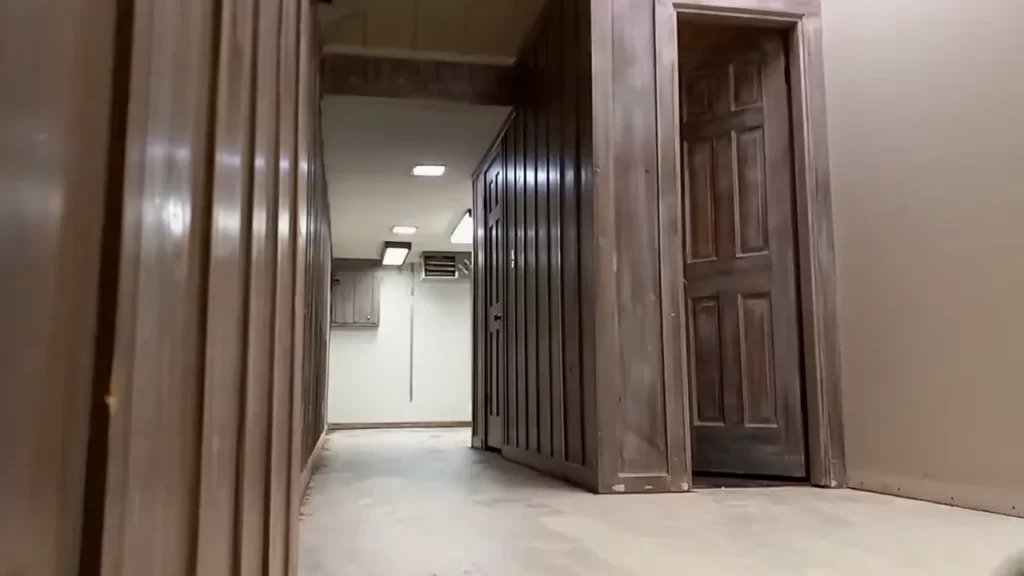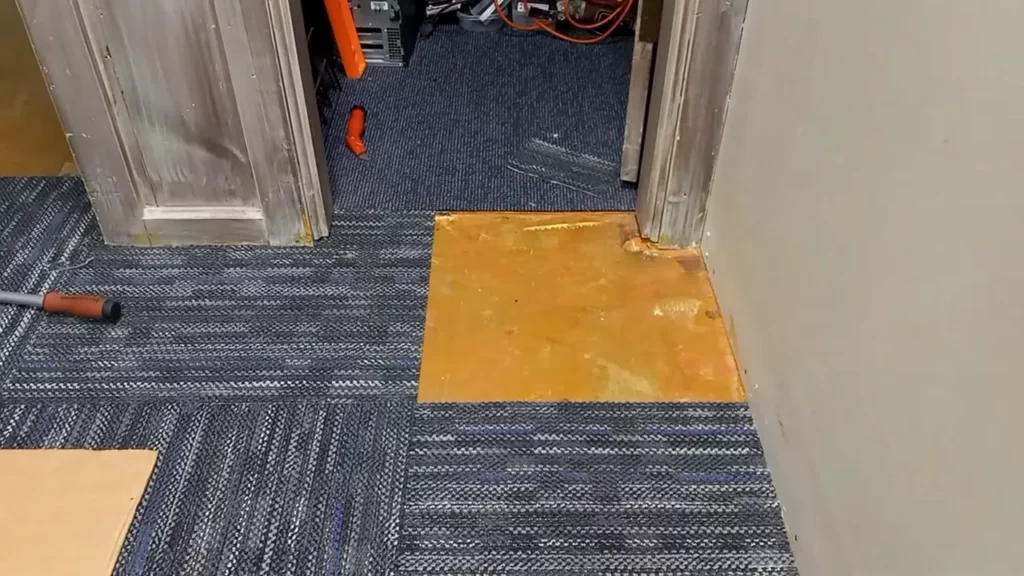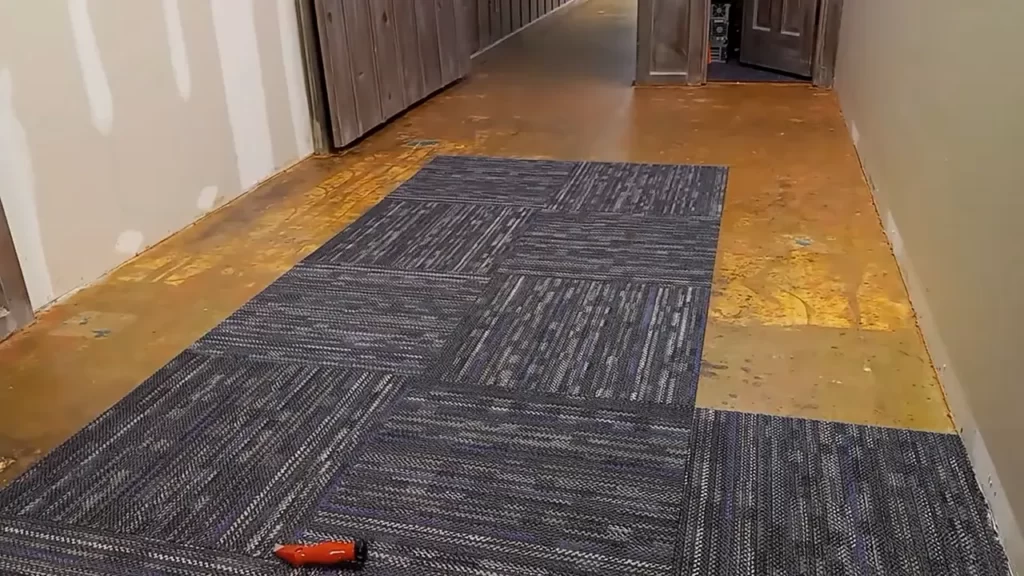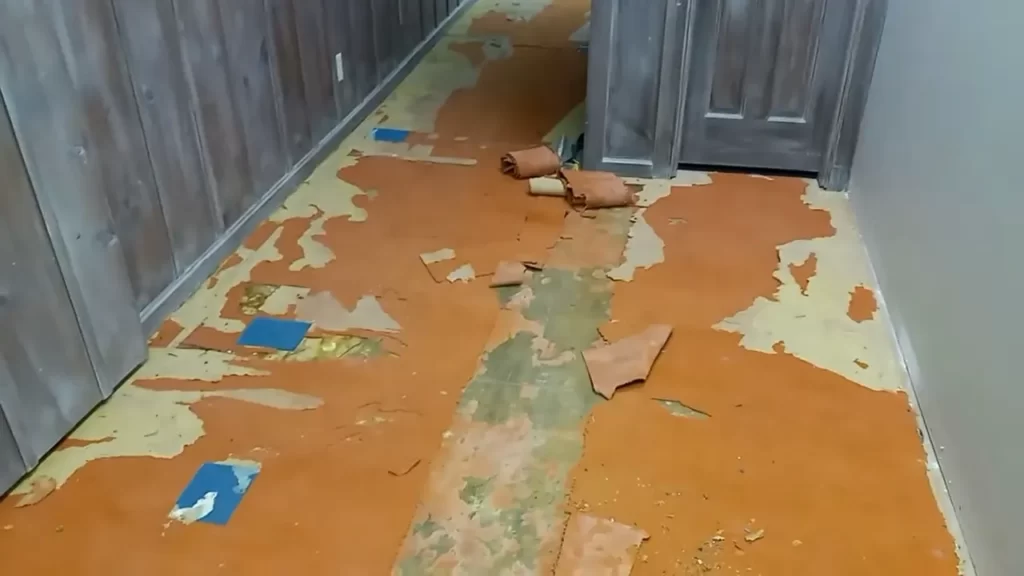To install commercial carpet, begin by thoroughly cleaning and preparing the subfloor. Then, apply adhesive and lay the carpet tiles or rolls according to the manufacturer’s instructions.
Enhance The Aesthetic Appeal Of Your Space
Installing commercial carpet can significantly enhance the aesthetic appeal of your space. It offers a wide range of designs, patterns, and colors that can complement any interior style. With customizable options available, you can easily match the carpet to your brand identity, creating a cohesive look throughout your workspace. Besides the visual aspect, commercial carpet provides a professional and polished appearance, adding sophistication to your environment. Its durability and stain resistance make it an ideal choice for high-traffic areas, ensuring that it maintains its pristine look for an extended period. Whether you’re looking to renovate an office, hotel, or retail store, installing commercial carpet is a smart investment that promises both practicality and style.

Durability For High-Traffic Areas
Durability for High-Traffic Areas
When installing commercial carpet in high-traffic areas, durability is a top consideration. To withstand heavy foot traffic, the carpet needs to have a tough construction. Look for carpets that are specifically designed to be resistant to wear and tear. These types of carpets are often made with durable fibers, such as nylon or polypropylene, which can handle frequent use without showing signs of damage.
One of the advantages of installing a commercial carpet with high durability is its longevity and reduced maintenance costs. With a durable carpet, you can expect it to last longer, reducing the need for frequent replacements. This not only saves money but also cuts down on the time and effort required for maintenance. A durable carpet can withstand regular cleaning and still maintain its appearance, making it an ideal choice for high-traffic areas in commercial settings.
Noise Reduction And Comfort
Noise reduction and comfort are important factors to consider when installing commercial carpet. Commercial carpet can provide a quieter environment, reducing noise in busy office spaces. The softness of the carpet underfoot adds a level of comfort, making it more enjoyable for employees to walk and stand on throughout the day. This not only enhances employee satisfaction but also increases productivity. Studies have shown that a comfortable and quiet work environment can help reduce stress levels, improve focus, and boost overall well-being. Installing commercial carpet with noise reduction and comfort in mind can create a more pleasant and conducive workspace, benefiting both employees and businesses.
Measure And Assess The Area

To install commercial carpet, it is important to start by measuring and assessing the area. Accurate measurements are necessary to determine the required materials. Additionally, it is crucial to assess the condition of the subfloor and identify any necessary repairs or adjustments. This will ensure a smooth and successful installation process. Taking the time to measure correctly and assess the subfloor condition will help avoid any issues or delays later on. Paying attention to detail in the initial stages of installation is key to achieving a professional and long-lasting result.
Select The Right Carpet Type
Select the Right Carpet Type
Consider the specific needs of your business when deciding on the carpet type. Determine the appropriate fiber type and pile height based on factors such as foot traffic, durability, and maintenance requirements. Nylon and polyester are popular choices for commercial carpets as they offer high resilience and stain resistance. Determine the desired pile height, which affects comfort and appearance. Shorter pile heights are better for high-traffic areas, while longer pile heights provide a softer feel.
Evaluate carpet performance requirements
Assess the performance requirements of the carpet to ensure it meets your business needs. Consider factors like stain resistance, moisture resistance, and flammability ratings. Commercial carpets with stain-resistant treatments can withstand spills and stains, making them suitable for busy areas. Moisture-resistant carpets are essential for areas prone to spills or moisture, such as entranceways or kitchens. Additionally, consider the flammability ratings to meet safety standards.
| Key Considerations | Fiber Type | Pile Height | Performance |
|---|---|---|---|
| Foot Traffic | Nylon or Polyester | Short for high-traffic areas | Stain-resistant, moisture-resistant |
| Durability | Nylon or Polyester | Long for softer feel | Flame-resistant |
| Maintenance | Nylon or Polyester |
Choose A Professional Installation Team

Researching reputable commercial carpet installation companies is crucial when choosing a professional installation team. Evaluating their expertise and experience in handling commercial projects is an important step. Requesting quotes from different companies and comparing prices and services will help you make an informed decision. It’s essential to find a team that understands the unique requirements and challenges of commercial carpet installation and can deliver high-quality results. By hiring a reputable installation team, you can ensure that your commercial carpet is installed correctly and will last for years to come.
Prepare The Subfloor
Preparing the subfloor is an essential step in installing commercial carpet. Start by cleaning the subfloor thoroughly. Remove any debris, old carpet, or adhesive residue to ensure a clean surface. This will help the new carpet adhere properly and avoid any bumps or unevenness.
Next, it’s important to check that the subfloor is level and smooth. A level subfloor is necessary for a professional and stable carpet installation. Use a level tool to check for any uneven areas and address them accordingly. If there are any low spots or bumps, you may need to use a leveling compound or sand down high areas to create an even surface.
By following these steps and properly preparing the subfloor, you can ensure a successful commercial carpet installation. Take the time to clean and level the subfloor to pave the way for a smooth and durable carpet. Remember that a well-prepared subfloor is the foundation for a long-lasting carpet that will enhance the aesthetic appeal of any commercial space.
Install Carpet Padding
In order to install commercial carpet, it is important to properly install the carpet padding. Start by measuring and cutting the padding to fit the area. Make sure to secure the padding to the subfloor using adhesive or staples, ensuring even coverage without any gaps or overlaps. This will provide a solid foundation for the carpet to be installed on top.
Roll Out And Position The Carpet

When installing commercial carpet, it is important to start by unrolling the carpet on the prepared subfloor. Make sure to align the carpet correctly according to the room layout and features. Leaving extra material at the edges allows for trimming and adjustments as needed. After rolling out and positioning the carpet, it is time to move on to the next steps in the installation process. These steps may include stretching and securing the carpet, trimming away excess material, and attaching transition strips or molding. Remember to use appropriate tools and techniques for a professional finish. This includes using a power stretcher to ensure the carpet is taut and free of wrinkles and using a carpet knife to make clean, precise cuts. By following these steps and utilizing proper techniques, you can successfully install commercial carpet in your space. It is a worthwhile investment that can enhance the overall aesthetic and functionality of your environment.
Seam And Stretch The Carpet
| Seam and Stretch the Carpet |
| Seaming the carpet together using appropriate joining methods is crucial to achieve a flawless installation. The seams need to be tight and invisible, ensuring a seamless appearance. Using high-quality carpet tape or adhesive, carefully align the edges of the carpet and press them firmly together. By following proper instructions, you can achieve a long-lasting and professionally finished seam. |
| After the seams are securely joined, stretching the carpet is the next important step. Wrinkles are a common issue that can affect the aesthetic appeal and durability of the commercial carpet. Using a power stretcher, carefully stretch the carpet in all directions, ensuring it is taut and free of any wrinkles. This process creates a smooth surface, enhancing the overall appearance and longevity of the carpet. |
Trim And Finish Edges
Trimming and finishing the edges of commercial carpet is an essential step in the installation process. First, trim any excess carpet around the edges of the room for a clean and seamless look. Next, consider installing edge binding or transition strips to ensure a professional and polished finish. These strips will not only enhance the appearance of the room but also provide a smooth transition between different flooring surfaces. By incorporating these finishing touches, you can achieve a neat and tidy installation that enhances the overall aesthetic appeal of the commercial space.
Regular Cleaning And Vacuuming
Regular Cleaning and Vacuuming
To maintain the longevity and appearance of your commercial carpet, it is important to establish a routine cleaning schedule. Regular cleaning and vacuuming will help prevent the buildup of dirt, dust, and debris that can damage the fibers of the carpet and reduce its lifespan.

When vacuuming commercial carpets, it is advisable to use appropriate techniques to ensure thorough cleaning. Start by selecting the right vacuum cleaner with strong suction power and adjustable height settings. Adjust the height to match the carpet pile, and use attachments to clean hard-to-reach areas.
Addressing spills and stains promptly is crucial to prevent them from setting in and becoming more difficult to remove. Blot the spill immediately with a clean cloth or paper towel. Avoid rubbing the stain, as it may spread and penetrate deeper into the carpet fibers.
Remember:
- Establish a regular cleaning schedule for commercial carpets.
- Use appropriate vacuuming techniques for thorough cleaning.
- Address spills and stains promptly to prevent them from setting.
Regular maintenance and diligent cleaning will help keep your commercial carpet looking its best for years to come.
Professional Maintenance And Deep Cleaning
In order to maintain and clean your commercial carpet effectively, it is important to schedule periodic professional carpet cleaning services. These services play a crucial role in removing embedded dirt and grime that regular vacuuming may not be able to handle. By eliminating these deep-seated contaminants, you can significantly extend the lifespan of your commercial carpet and keep it looking fresh and presentable for longer.
Preventive Measures For Longevity
Some preventive measures can help in prolonging the longevity of the commercial carpet. One effective measure is placing mats or rugs at entrances to trap dirt and moisture, reducing the amount transferred onto the carpet. Implementing a “no shoes” policy in certain areas can also prevent dirt and debris from accumulating. Regularly inspecting the carpet for any damage or wear is crucial, as addressing them promptly can prevent further deterioration. The use of carpet protectors or furniture pads can also minimize the risk of damage from heavy furniture.
Frequently Asked Questions On How To Install Commercial Carpet
Does Commercial Carpet Have To Be Glued Down?
Commercial carpet does not have to be glued down. There are several methods for installation, including direct glue, double glue, or using adhesive tape. The choice depends on the specific type of carpet, the installation location, and the desired durability.
What Is The Most Common Way Commercial Carpet Is Installed?
The most common way commercial carpet is installed is by using adhesive or carpet glue. The carpet is typically stretched out, cut to size, and then glued down to the floor. This method provides a secure and durable installation for high-traffic areas.
Do You Need Padding Under Commercial Carpet?
Yes, padding is necessary for commercial carpet. It provides comfort, prolongs the carpet’s lifespan, and helps with sound insulation. Padding also helps to absorb shock and prevent excessive wear and tear, making it a crucial component for commercial spaces.
Conclusion
Installing commercial carpet involves a step-by-step process that can improve the aesthetic and functionality of any space. By following the right techniques and using the proper tools, you can achieve a professional-looking result. From preparing the subfloor to laying and stretching the carpet, each task is essential to ensure durability and longevity.
Whether you’re setting up a new office or renovating a commercial space, mastering the art of installing commercial carpet will enhance the overall atmosphere and make a lasting impression.
